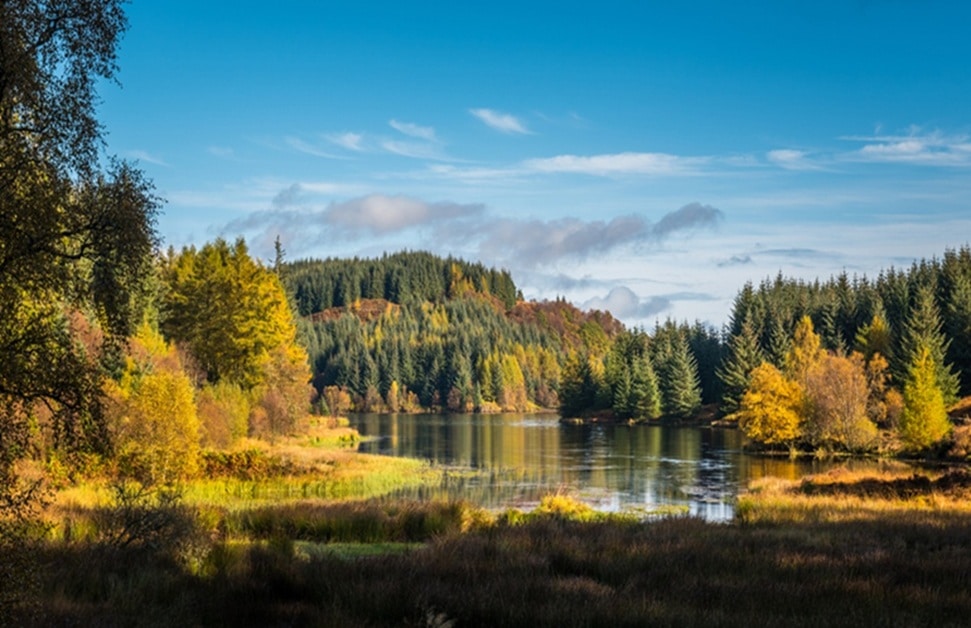
With temperatures soaring well above seasonal norms and prolonged drought, many of the UK’s forests and woodlands were put under stress during the summer of 2025. Can our trees bounce back?
How the hottest summers affect our woodlands
When Met Office climate scientists confirmed that the summer of 2025 was the warmest summer in Britain since records began, ecologists and foresters were already warning of silent casualties: our woodlands. The UK’s all time highest temperatures not only tested the resilience of familiar species such as oak, ash and birch, but also raised serious questions about the future of timber supplies, leading woodland managers to reconsider planting strategies to adapt to the rapidly changing climate.

Why have we seen the warmest summer on record?
According to the Met Office, the UK recorded a mean temperature of 16.1 °C, breaking the previous 2018 record of 15.76 °C. Met Office scientist Dr Emily Carlisle said:
The persistent warmth this year has been driven by a combination of factors including the domination of high-pressure systems, unusually warm seas around the UK and the dry spring soils. These conditions have created an environment where heat builds quickly and lingers, with both maximum and minimum temperatures considerably above average.
Just how unusual was the summer of 2025?
July and August brought near-unbroken sunshine; analysis shows temperatures regularly topping 35°C in southern England during near constant high pressure and four heatwaves, and rainfall deficits of up to 50% compared to the seasonal average. However, this year’s highest temperatures were not the highest since records began: Coningsby in Lincolnshire reached a temperature of 40.3°C in July 2022, while the highest temperature recorded in the heatwave of 2003 was in Faversham Kent which reached 38.5°C in August 2003.
Head of climate attribution at the Met Office, Dr Mark McCarthy, said that this summer’s extreme hot spell was made much more likely because of human induced greenhouse gases released since the Industrial Revolution. He commented:
In a natural climate, we could expect to see a summer like 2025 with an approximate return period of around 340 years, while in the current climate we could expect to see these sorts of summers roughly one in every five years. Our analysis suggests that while 2025 has set a new record, we could plausibly experience much hotter summers in our current and near-future climate and shows how what would have been seen as extremes in the past, are becoming more common in our changing climate.
Commenting on the Met Office’s confirmation that England has suffered it’s driest spring in over a century, Tom Lancaster, land, food and farming analyst at the Energy and Climate Intelligence Unit (ECIU), said:
The rate at which climate records are falling is relentless. 2022 saw the hottest UK day ever; 2024 was then the wettest winter on record, following the wettest 18-month spell. 2025 was the warmest spring on record for the UK and now it’s the hottest summer.
He added that due to greenhouse gases, climate change and human induced industrial emissions, these extremes will continue to worsen.
Which trees struggled and which coped best?
The hottest summers, dry ground and strong winds put trees in peril. Many trees demonstrated the effect of the heatwave by their leaves turning yellow months early, while growth rings on young trees virtually disappeared, However, not all trees react to heatwaves in the same way. Here are some of the most notable examples:
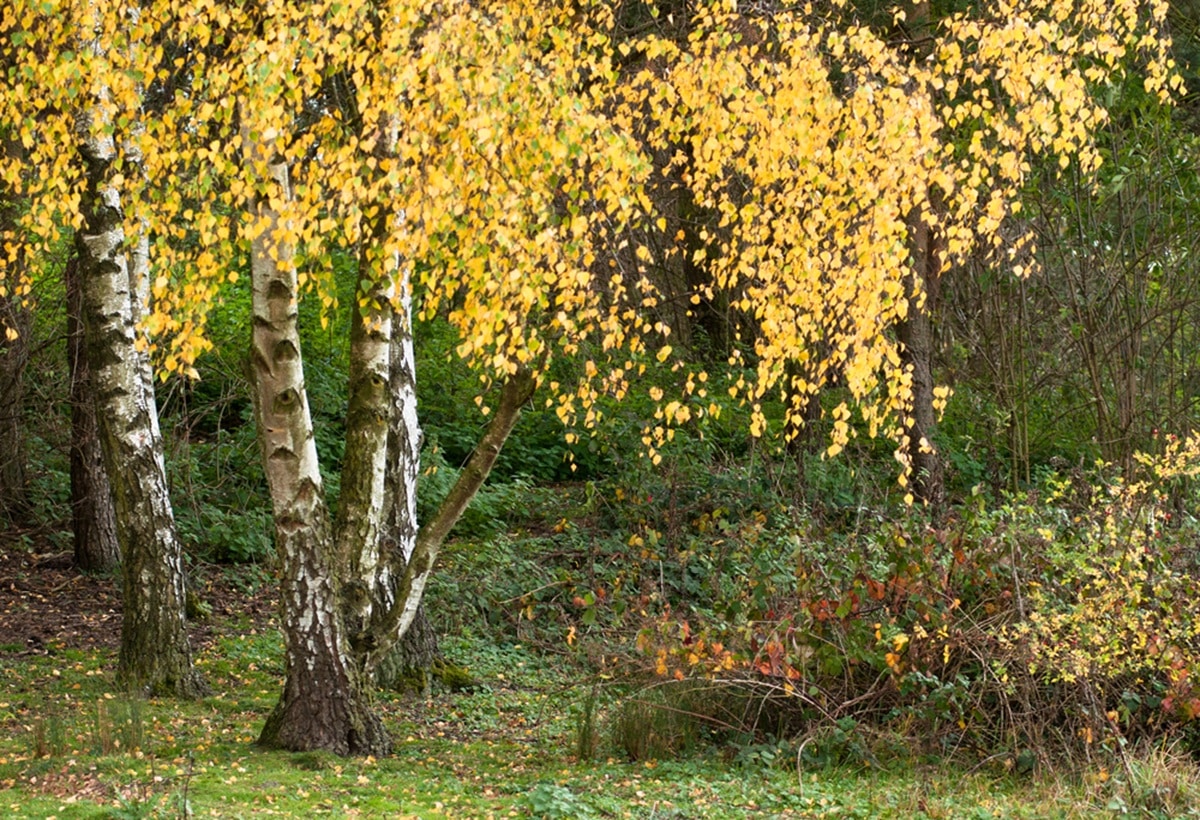
Silver Birch: Shallow-rooted species such as silver birch showed the most visible signs of distress. Preferring light, free-draining soils, birches struggle in prolonged dry spells. Many displayed smaller leaves that turned yellow early and dropped due to the dryness of the top 50cm of soil where their roots lie. By mid-August, woodland managers reported widespread leaf scorch, early dieback and stunted growth among birch.
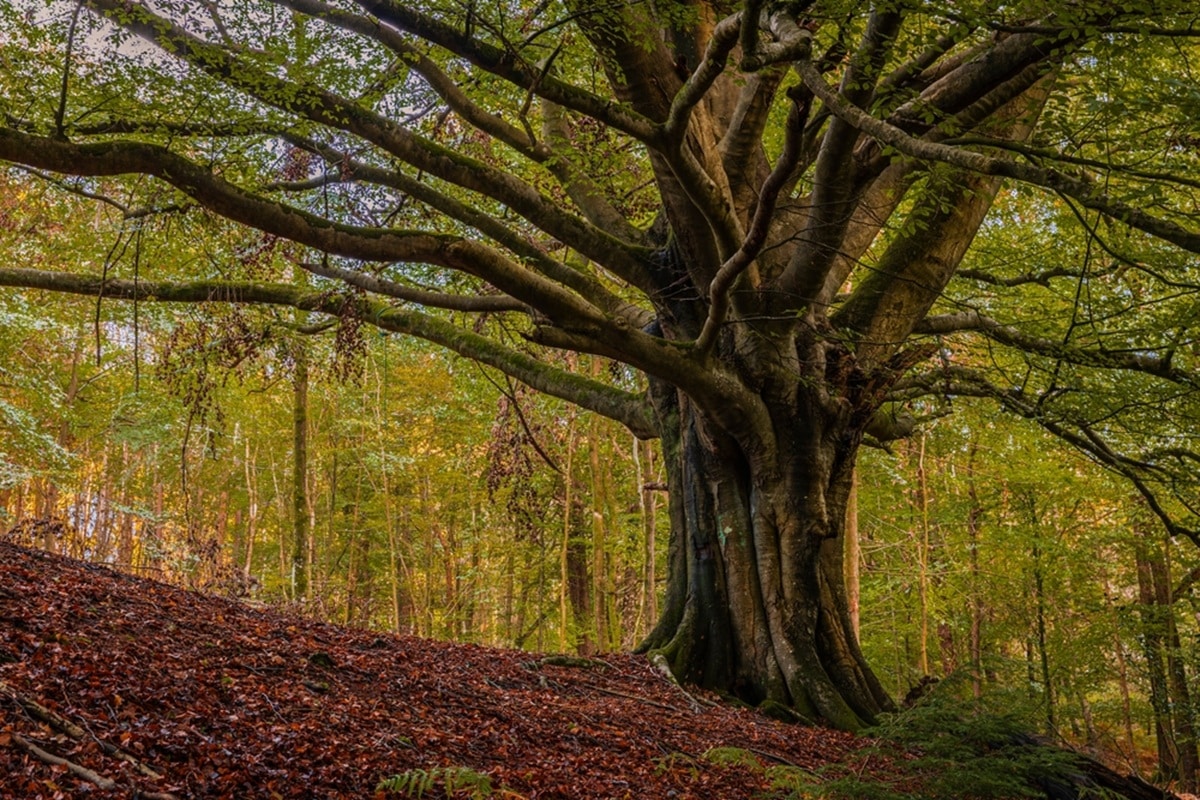
Beech trees: Traditionally thought of as hardy, beech has relatively shallow roots, making it susceptible to drought. Large stands in southern England showed leaf browning and canopy thinning, with fears that some older specimens may not recover.
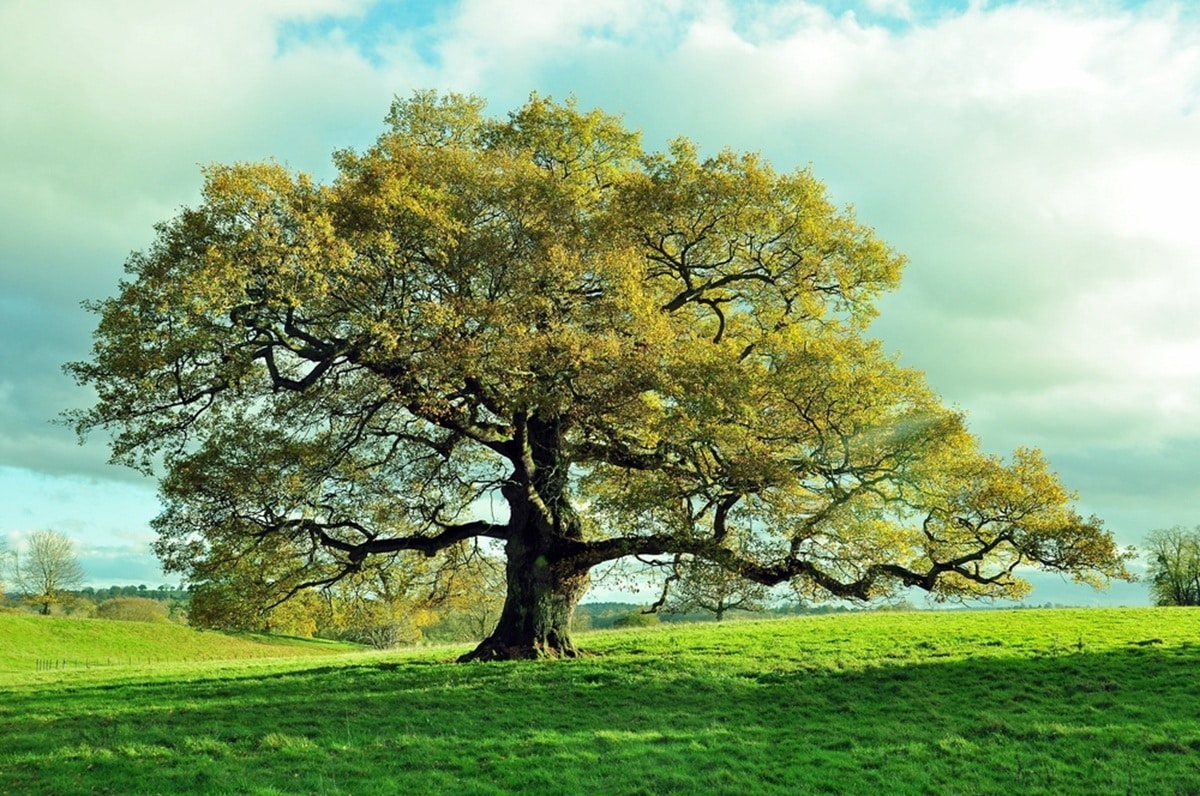
Oak and hornbeam: Their deeper roots and tolerance to a fluctuating average temperature allowed them to weather the heat better, though experts warn that much hotter summers of this intensity could change this.
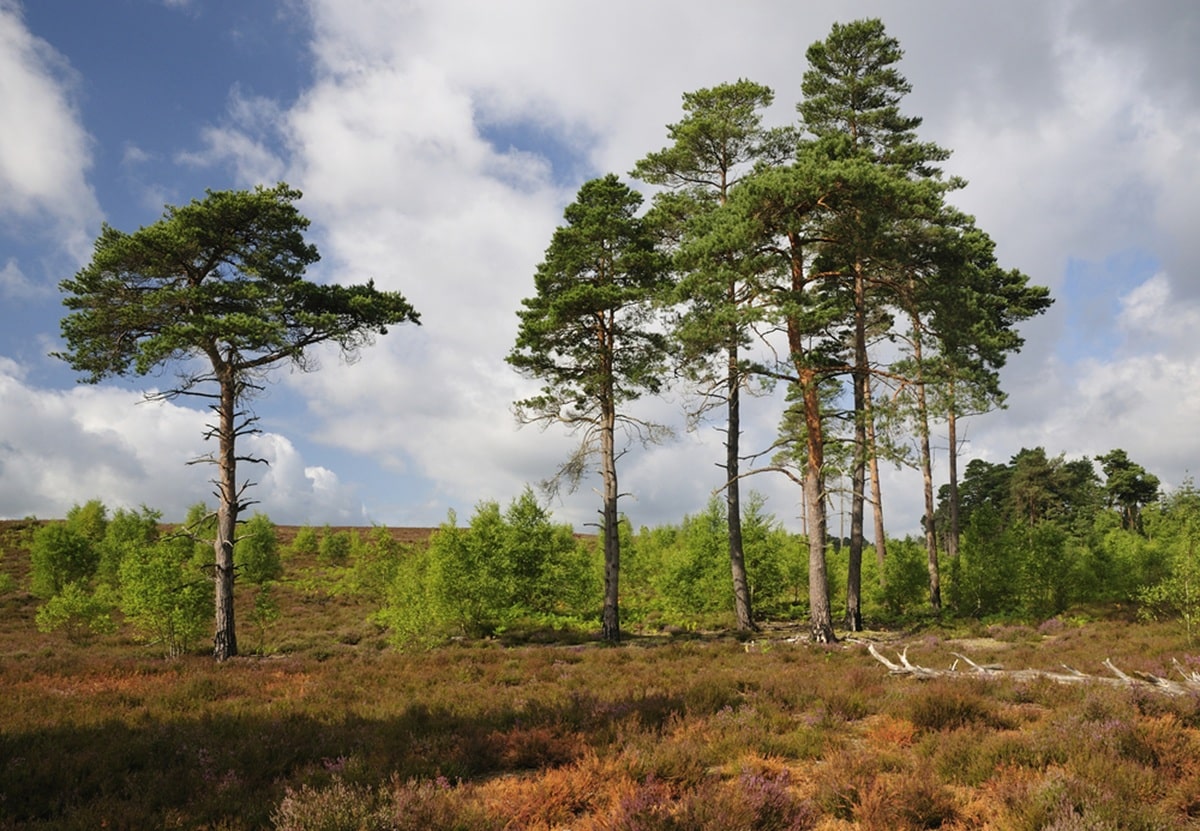
Conifers: The effects of the hot weather were mixed: Scots pine showed moderate stress, with needle browning in some plantations, while Sitka spruce, a non-native species, suffered in drier eastern regions.
How did the drought affect wildlife?
While woodlands were badly affected, the impact of the heatwaves extends further: drier soils meant fewer invertebrates for birds to feed on, while berries and nuts ripened prematurely, reducing vital food supplies for many creatures in autumn and winter. Ground-dwelling species such as hedgehogs and amphibians have been particularly badly hit, suffering from dried up undergrowth and shrinking ponds.
The Woodland Trust 2025 Report warned that biodiversity levels in woodlands have reduced, with severe declines in both butterfly and bird populations, down -47% and -37% respectively.
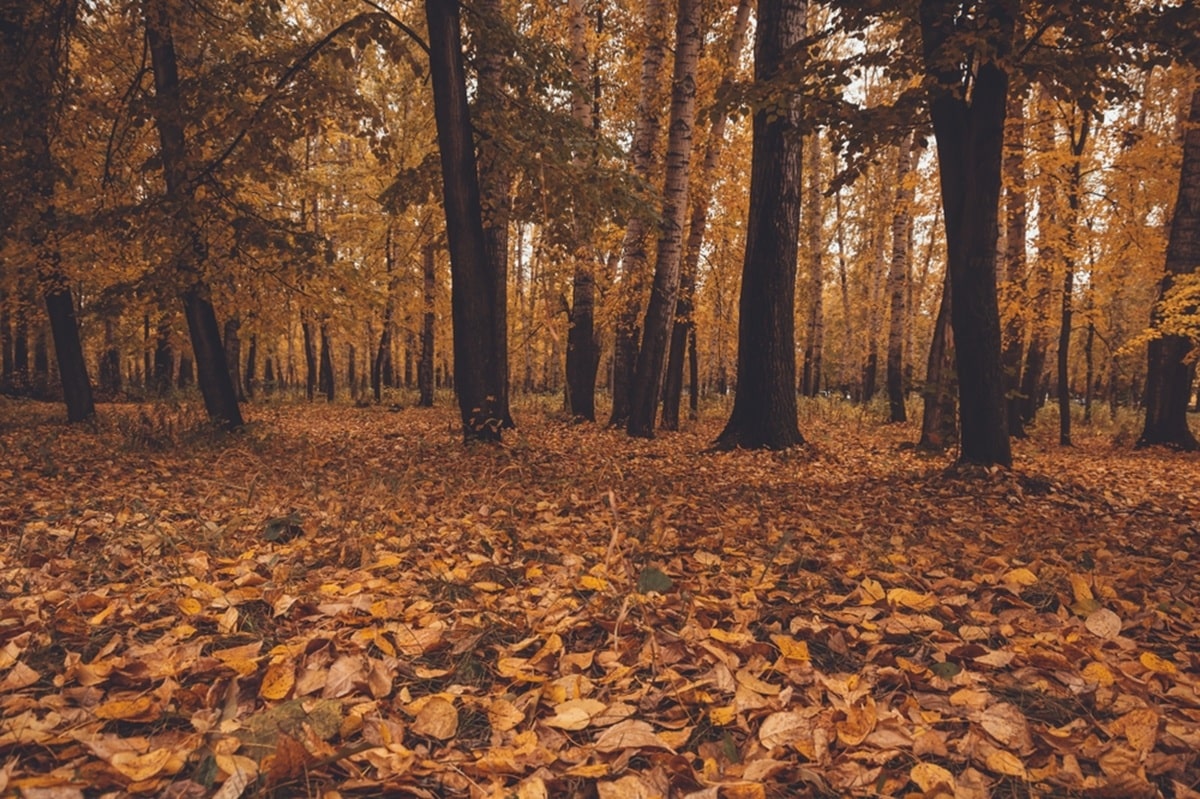
Can UK forests and woodlands recover?
Yes – if conditions allow. Trees stressed by heat and drought often conserve energy by shedding leaves early, a survival mechanism that doesn’t necessarily mean that they are dying.
If autumn and winter bring sustained heavy rain, soils can recharge their moisture reserves, and many trees will recover next spring, according to the National Forest. Rain will encourage stressed trees to produce a fresh flush of leaves, helping them photosynthesise and store sugars. Over the next six to nine months, above average rainfall is needed to soak the ground rather than run off it and restore water levels. A wet spring would certainly boost weakened trees, enabling new growth.
The greatest threat is from consecutive hot summers: continual drought could tip marginally stressed trees into irreversible decline, leaving gaps in woodlands that invasive species or pests might quickly take over.
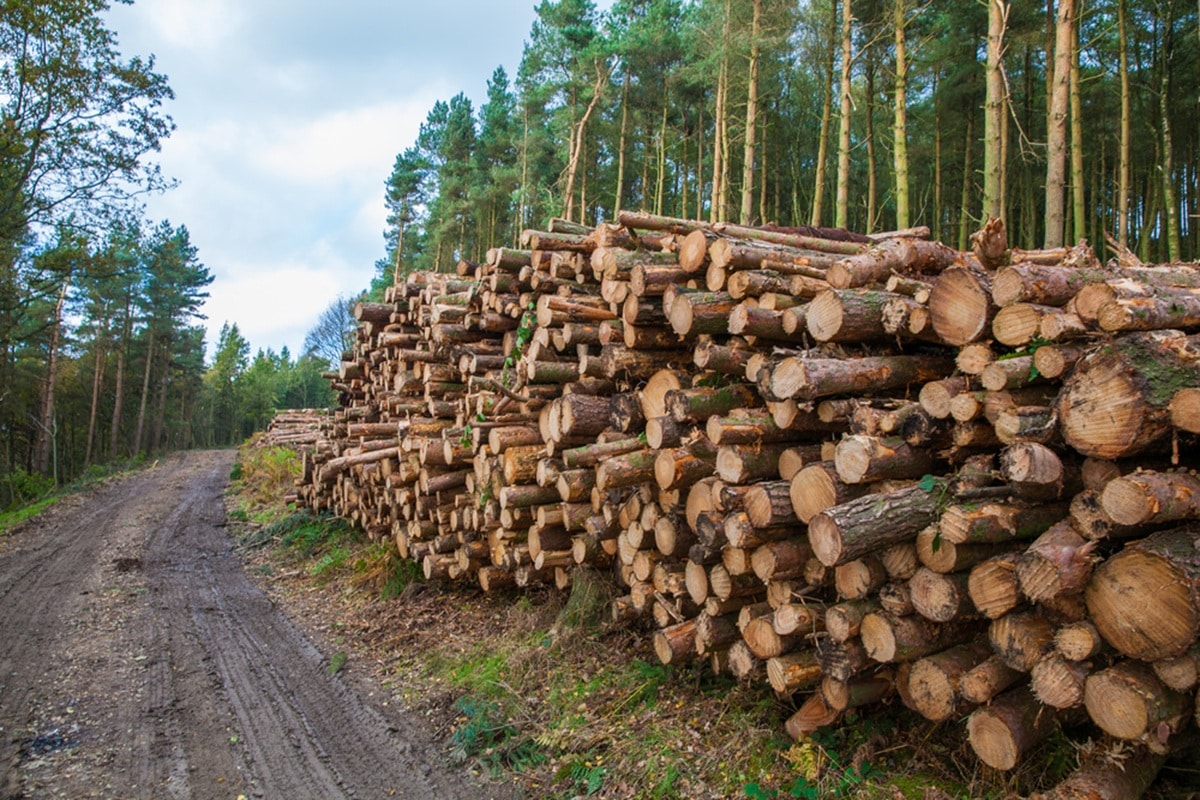
Future timber supplies
Drought stress slows tree growth, meaning reduced yields in coming years. Weakened trees are also more vulnerable to pests such as bark beetle, which thrives in warmer, drier conditions.
Scandinavian suppliers have warned that climate change is constraining softwood production, raising concerns about the UK’s reliance on imports. Ensuring a secure domestic supply may require urgent changes in forest management.
Industry body the Confederation of Forest Industries UK (Confor) has warned that climate change poses long-term risks to sustainable timber supplies in the UK, especially Scotland. A spokesperson noted:
If droughts like this become more frequent, we’re looking at slower-growing timber, more disease outbreaks, and potentially shortages of high-quality hardwoods.
Confor has backed plans to build resilience into Scottish woodlands to combat climate change. Immediate and long-term priorities over next 10 years include reducing risks from the hottest summers, choosing species that will thrive, exchanging knowledge and training, use of AI, eDNA, satellite data and workshops to learn from other countries.

Should we rethink woodland planting?
Woodland managers must consider whether to continue planting traditional species or introduce more drought-tolerant varieties, including those from southern Europe. According to Forest Research, the scientific agency for trees in Great Britain, forecasts of drier summers and the likelihood of droughts will increase water stress in trees, with southern England facing the highest risk of drought.
To counter this, Forest Research proposes planting different species, improving breeding stock, managing vegetation to reduce wildfires, alternative tree thinning methods and increased monitoring and contingency planning. Species mixes will provide some insurance against climate change if matched to the site.
Forestry Commission Scotland is trialling Climate Ready Forestry at 67,000 hectare Queen Elizabeth Forest Park in Scotland, which it manages for timber production and recreation. Planting UK-sourced and grown trees will avoid introducing tree diseases that might survive better in a warmer climate, according to the Woodland Trust.
Changes to woodland design are also being considered, such as planting in mosaics of habitat to combat vulnerabilities, increasing ground cover to reduce evaporation, and restoring wetlands to retain moisture levels in woodlands.

What lessons can we learn from Europe?
Extreme heat during the five hottest summers in Europe has caused droughts and wildfires, resulting not only in the loss of trees, but adverse impacts on tree growth and knock-on effects on world timber markets. Bark beetle infestations have badly hit Norway spruce forests and other pest and disease outbreaks are more frequent. In countries including Spain, risk of wildfires has led to rethinking the use of fire breaks and drought-tolerant planting.
The European Forest Institute states that while the UK has avoided the worst climate attribution scenarios seen in European forests over recent years, we could plausibly experience the same situation if we are slow to adapt. Preventative steps already being taken include:
- Water retention projects: restoring streams, ponds, and wetlands within forests to hold moisture in hot weather.
- Diversified planting: mixing species with different tolerances to spread risk.
- Soil protection: reducing compaction from heavy machinery to improve water infiltration.
- Assisted regeneration: protecting natural seedlings from deer browsing, allowing new generations of resilient trees to establish.
- Public involvement: woodland visitors should be encouraged to stick to paths to avoid compacting soils, and support conservation organisations through donations or volunteering.
What’s the long term future for UK forests?
The summer of 2025 may be remembered as the moment we realised our woodlands are not immune to climate change but are fragile systems that will be affected by a hotter climate. As long term meteorological average temperatures are expected to rise due to the greenhouse gases humans continue to create, hot weather is a serious long term problem.
We saw the UK’s all time high temperature recorded in July 2022 and four heatwaves this year, which combined with human induced climate change, present the prospect of much hotter summers becoming the norm.
Despite this, with heavy rain and restored water levels, many stressed trees may rebound, flushing green again next spring. If not, we will see gaps in woodlands, a decline in timber yields, and woodland managers will face tough decisions about what Britain’s forests should look like in 50 years’ time. The coming winter will determine how well our trees recover. For now, the future of our woodlands is in the hands of the weather.



